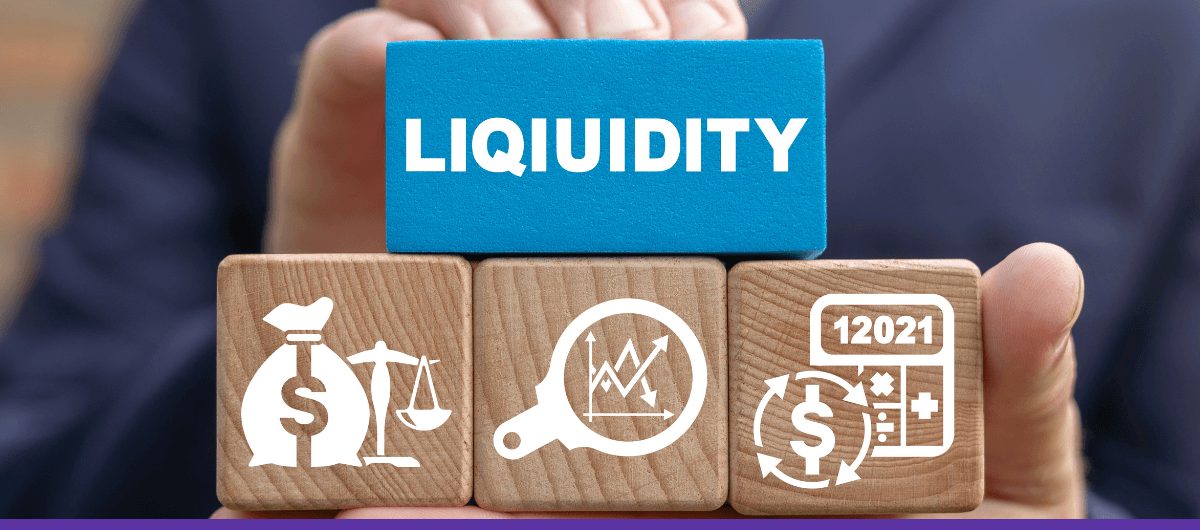Understanding Good Liquidity And Its Ratios

Opening Balance Equity And Its Importance
December 14, 2022
A Guide To IRS Form 720
December 15, 2022Understanding Good Liquidity And Its Ratios
It is extremely vital for a business to have a clear understanding of the company’s accounting liquidity. In order to achieve that, you need to explore liquidity ratios. The question arises what is a good liquidity ratio, and more importantly, what does a good liquidity ratio aim for?
Let’s dig in to find out all about a good liquidity ratio, its formulas, and everything related to accounting liquidity.
What Is A Good Liquidity Ratio?
A liquidity ratio is a financial metric measuring a business’s ability to pay off its debts before they are due.
To simplify, the liquidity ratio defines whether a company has enough current assets to cover its liabilities or not. It is crucial for business owners to have robust clarity about the company’s accounting liquidity.
The lenders or creditors use the liquidity ratios to determine whether it would be feasible to extend the credit or not.
Let’s explore some of the most commonly used liquidity ratio formulas.
Commonly Used Liquidity Ratios And Their Formulas
1. Current Ratio
This kind of ratio is also referred to as the working capital ratio. The current ratio measures the current assets against the current liabilities of a business as the main focus is on the current assets, it will include the tangible assets that might not be converted into cash easily, such as inventory or real estate.
The formula for the current ratio is:
Current Ratio = Current Assets / Current Liabilities
2. Quick Ratio
The quick ratio is also known as the acid-test ratio. This is a ratio that determines whether a business will be able to pay off its liabilities with the help of quick assets or not. Quick assets are those which can be converted into cash within a short span of 90 days.
The quick ratio is a good indicator of the short-term liquidity status of a business.
The quick ratio liquidity formula is:
Quick Ratio = (Cash And Cash Equivalents + Marketable Securities + Accounts Receivable) / Current Liabilities
3. Cash Ratio
The cash ratio is a liquidity formula that looks into the company’s ability to pay off the current liabilities with the help of cash equivalents (such as treasury bills, marketable securities, etc.) or cash.
The liquidity cash ratio formula is as follows:
Cash Ratio = (Cash And Cash Equivalents + Short-Term Investments) / Current Liabilities
What Is A Good Liquidity Ratio?
Now that you know the most commonly used business liquidity ratio formulas in hand, you can check out the results it will yield. In short, a good liquidity ratio is any number that is higher than 1. A liquidity ratio is considered good if it is somewhere between 2 and 3.
A higher liquidity ratio result means that the business has a significant margin of proving its safety with regard to the debt obligations.
But it is also important to understand that if the liquidity ratio is high, it might indicate that you are playing too safe to go for upward growth. This might mean that you are keeping most of the cash in hand and need to allocate your capital intelligently.
Why Is Liquidity Important For Firms?
Liquidity is important to the firms as it determines how efficiently cash can be obtained from the business to accommodate bills or any other kind of short-term obligations.
Tangible assets or other assets such as bonds or stocks which can be easily sold are also considered liquid assets. To be on the safe side, businesses must have enough liquidity to cover any kind of obligations or bills to keep the business operations rolling such as payroll, overhead expenses, etc.
How Is Liquidity Different From Solvency?
Liquidity mainly refers to the payments or obligations which are short-termed. On the other hand, solvency is a company’s ability to make payments for long-term commitments.
For a firm, solvency means repayment of interest or the principal amount on any kind of debt, such as bonds or leases.
Now the question arises what if these liquidity ratios come as negative? Can It lead to a liquidity crisis?
What Is A Liquidity Crisis?
Even the most stable kind of companies can go through difficult times and undergo liquidity crisis. It may become difficult for them to meet their obligations, even the short-term ones like paying their employees or making payments on their loans.
One such recent example is the Global Credit Crunch that took place in 2007-09. It is known as one of the most severe worldwide economic crises that took place in the early years of the 21st century. This was named as the most severe financial crisis after the Great Depression of 1929.
The Global Credit Crunch was so bad that a lot of companies that were healthy filed for bankruptcy as they couldn’t sustain their break-even point and lost their capital as well as reputation.
Final Thoughts
Liquidity is the ability to the conversion of assets into cash quickly to pay off the short-term liabilities of a business. The better the liquidity, the more stable a company is. Different ratios are used to calculate a company’s liquidity and are further used for comparison and analysis to be conducted internally and externally.
See Also: How To Prepare An Adjusted Trial Balance | Step-By-Step
Farwah Jafri
Farwah Jafri is a financial management expert and Product Owner at Monily, where she leads financial services for small and medium businesses. With over a decade of experience, including a directorial role at Arthur Lawrence UK Ltd., she specializes in bookkeeping, payroll, and financial analytics. Farwah holds an MBA from Alliance Manchester Business School and a BS in Computer Software Engineering. Based in Houston, Texas, she is dedicated to helping businesses better their financial operations.






